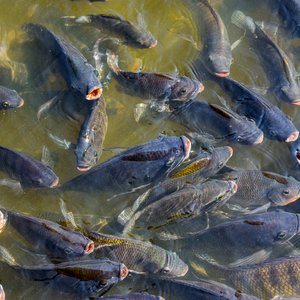As the global demand for shrimp feed grows—expanding five-fold since 2020—finding sustainable and efficient protein sources to support this growth is more important than ever. Insect meal, particularly from the black soldier fly (BSF), has emerged as a promising alternative to traditional fishmeal. But despite its potential, scaling the use of insect proteins in shrimp feed formulations remains a complex challenge. At the Global Shrimp Forum, industry leaders discussed how partnerships, cost-reduction strategies, and functional benefits can push insect meals toward mainstream adoption.
Partnerships: Key to scaling insect protein
The success of the insect protein industry hinges on strong partnerships with major feed companies and large integrators. According to Piotr Postepski, chief commercial officer at Protix, these collaborations are vital for building the necessary infrastructure to scale production. “We need long-term contracts to help build more factories, faster, cheaper, and more efficiently. We also need to invest in even better technology to provide the product,” Postepski said.
By working closely with these partners, insect meal producers can share costs and risks, while also gaining the necessary financial backing to invest in large-scale production. This will help reduce the price of insect meal, making it more competitive with traditional feed ingredients.
Investors are still backing the insect industry due to several factors, including the short life cycle of the black soldier fly and its upcycling capabilities. According to Rajesh Behal, chief investment officer at Global Agribusiness, BSF is relatively easy to manage and has a nutritional profile comparable to fishmeal, making it an attractive option for feed formulations. “BSF meal has a fairly consistent nutritional profile, and the biologicals are easier to deal with compared to other insects,” Behal noted.
Scalability and the path to cost reduction
As the insect protein industry continues to mature, Gaëtan Crielaard, co-founder and CEO at Entobel, stressed the importance of operational excellence.
“Insect companies need to focus on getting down the cost curve rather than rushing into capital-intensive expansions. Operational efficiency is key to making insect meal mainstream,” Crielaard explained. Entobel, which has been producing insect meal for over ten years, sees the next five years as crucial for driving down costs and refining processes.
“While the insect industry hasn’t yet reached economies of scale, recent announcements of new production facilities suggest that over 200,000 metric tons of insect meal could enter the market in the next three to four years. This will help drive costs down and improve scalability,” said Linda Chen, associate at Hatch.
Functional benefits: Beyond protein
Delphine Melchior, global core nutrition director at Cargill, emphasized that while the price of insect meal doesn’t yet meet all their requirements, its functional properties—such as chitin, antimicrobial peptides, and lauric acid—are opening doors for its inclusion in shrimp feed.
Crielaard highlighted that BSF possesses a strong immune system, which results in a wide range of antimicrobial peptides, such as defensins, that contribute to improved shrimp survival rates. However, understanding the mechanisms behind these functional properties requires extensive research. “This is a complex, costly process, which is why partnerships are crucial,” Crielaard said.
“Shrimp fed with insect meal show higher survival rates when challenged with pathogens like Vibrio,” Melchior said. These functional benefits make insect meal more than just a one-to-one replacement for fishmeal, offering added health benefits for shrimp. “We have a tendency to put fishmeal against insects, but they can work together. There are also other examples with other ingredients or additives where synergism exists. Permanently thinking one against one is not the best way to move forward,” Melchior said.
Insect meal offers unique advantages over traditional protein sources. Postepski explained that in trials, shrimp fed with insect meal exhibited better performance compared to those fed fishmeal. This has led to the positioning of insect meal as a premium product rather than a direct competitor to fishmeal or soy protein.
“I think it's unfair to compare what we produce to the price of the fishmeal or the soy protein because we are offering a different product. In a recent trial in salmon fed with our ProteinX protein meal, the Norwegian University of Life Sciences proved that the performance of animals was significantly improved with a higher slaughter yield and improved meat quality. The researchers also ran taste panels with the outcome that the meat coming from the fish that was fed with our meal was regarded as tastier. That's why we believe that all of these arguments are adding a premium to our offering. We will not be able to match the price of the fishmeal or soy protein. That’s not our objective,” Postepski said.
Retailers and consumers’ perception
Retailers like Albert Heijn are already selling shrimp fed with insect meal. Frédérique Glazener, sustainability manager at Albert Heijn, emphasized the importance of a sustainable supply chain, working with partners like Klaas Puul, Skretting, Protix, Veramaris, and Cofimar to share the costs. “We are investing in a more sustainable supply chain, and while insect meal is a small component today, we aim to scale it up as more industry partners come on board,” Glazener explained.
However, from a consumer perspective, communicating the benefits of shrimp fed with insect meal remains a challenge. According to Glazener, their project was marketed as a sustainable shrimp option, with insect meal mentioned in press releases but not prominently featured in consumer-facing messaging.
“We are still learning how to best engage our consumers, but we are confident that we will get there,” Postepski added.
Read more about the Global Shrimp Forum:










